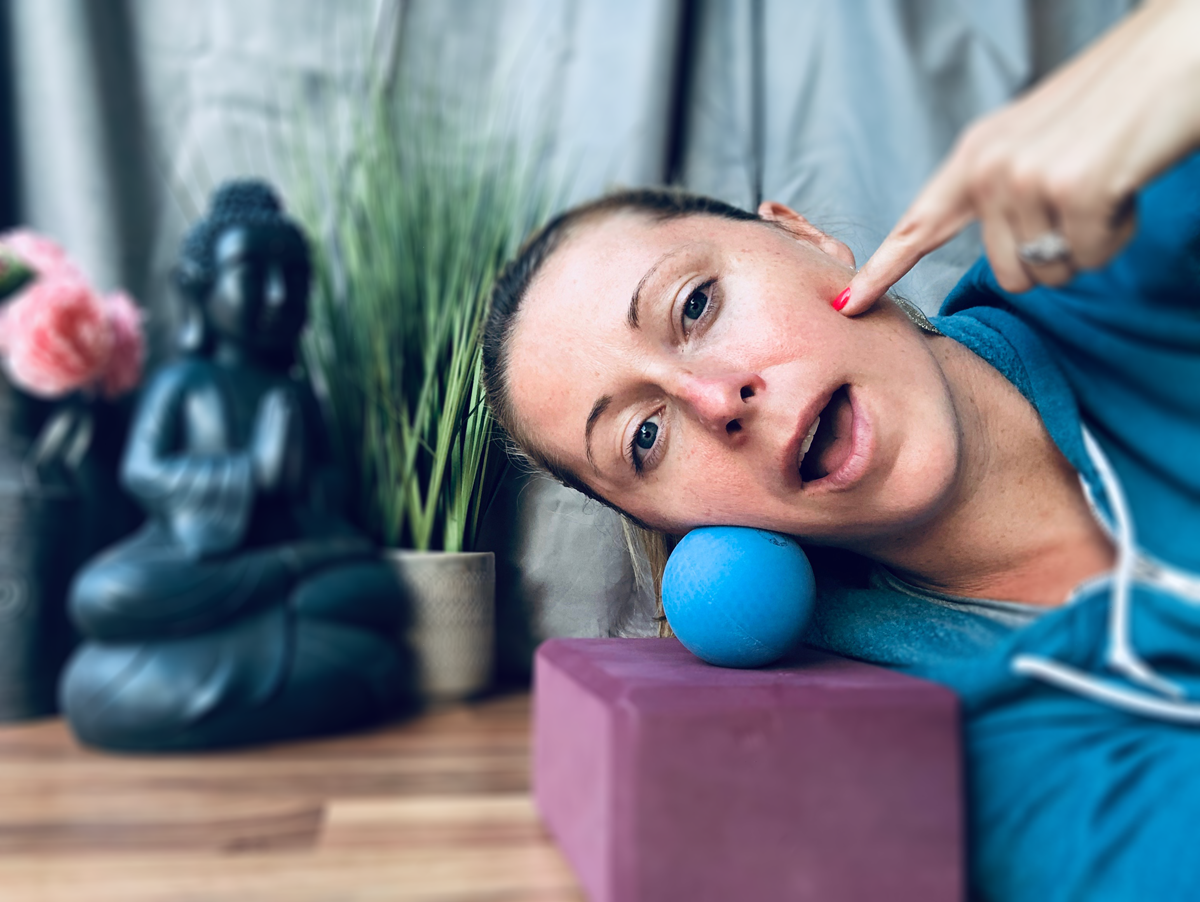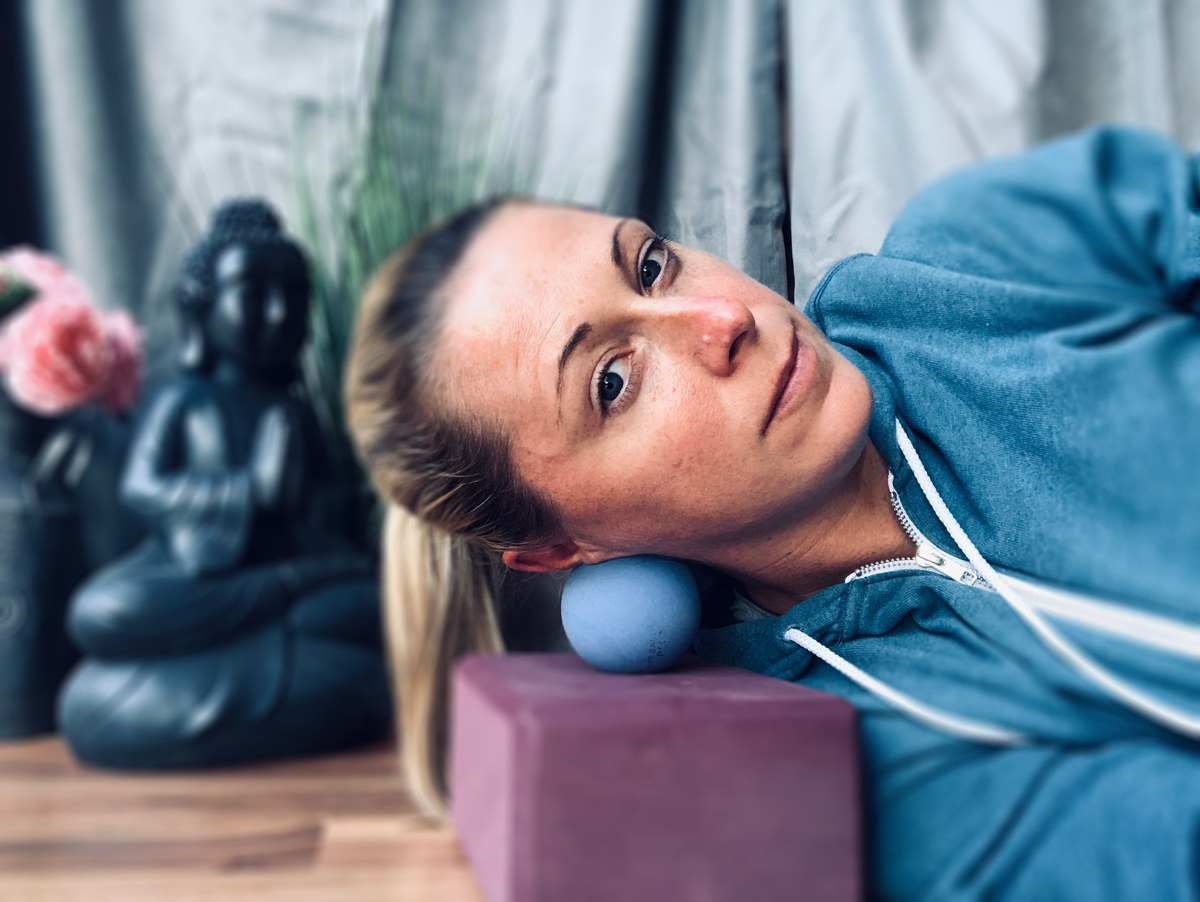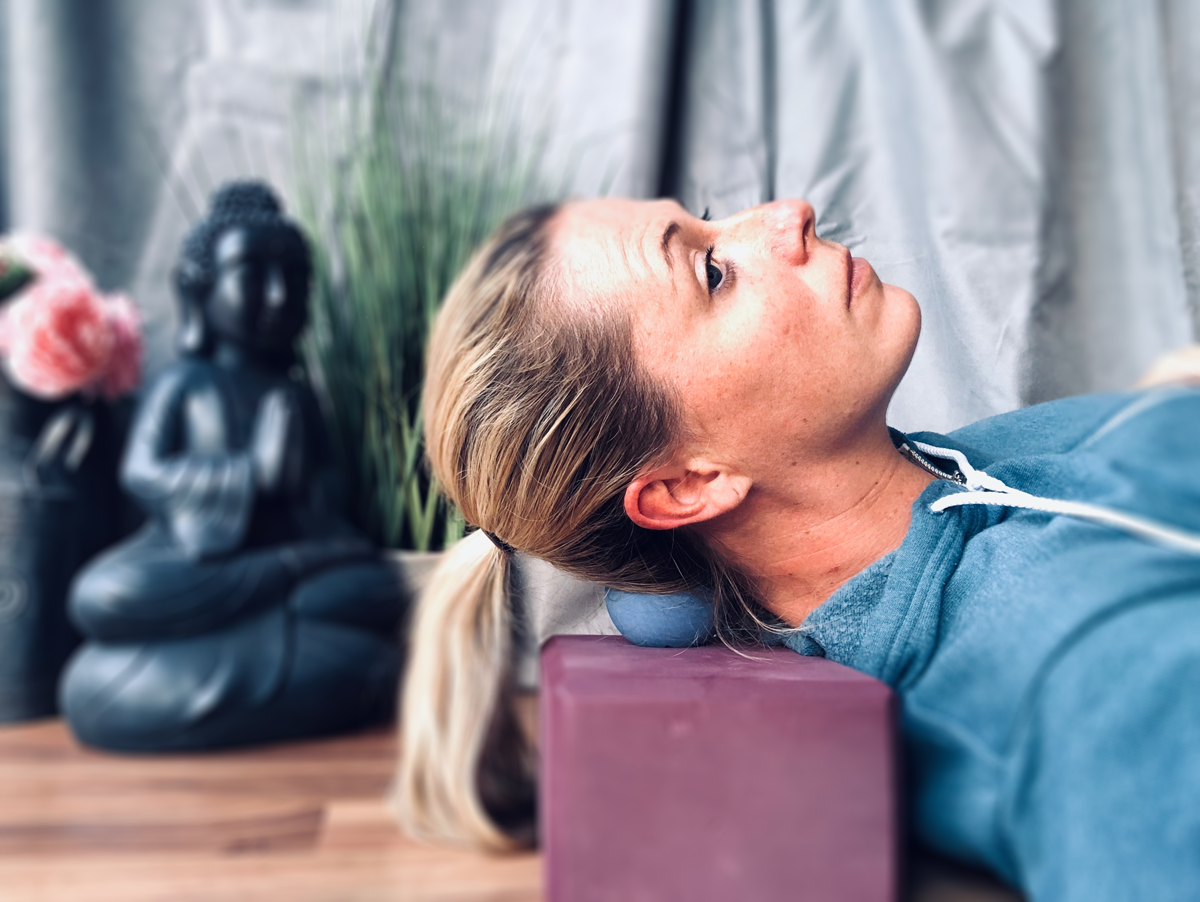Release Tension Before Bedtime with These Rolling Exercises
Written & Developed for BreatheTogetherOnline.com Magazine - check them out!
Tools: Yoga block (or book) and Yoga Tune-Up™ ball (tennis or lacrosse balls can work here as well)
According to the American Institute of Stress and American Psychological Association, over 77 percent of people regularly experience physical symptoms caused by stress, and 73 percent experience psychological symptoms. For most, sources of stress included the future of our nation, money, work, politics, and violent crime. Unfortunately, these topics permeate our daily lives. In addition, 43 percent of adults reported that stress has caused them to lie awake at night.
While a strong, mindfulness practice can help us manage the moving stressors of the day, bedtime can be like slamming on the breaks of a car: we stop moving, and all of a sudden, the momentum from the back seat rushes up to the front. Restorative Yoga Teacher Judith Laseter, often says that new students will complain that savasana, or long relaxing postures, “stress them out” – to which she kindly replies, “Maybe it’s not savasana that’s stressing you out; maybe you’re finally sitting still enough to feel the stress that’s already there.” So, when most of us head to bed – BAM! – there it all is.
By developing a five to 10-minute self-care routine before bed, you can actually change the way your nervous system is primed throughout the day, and actively prepare yourself for a higher quality of sleep. By using self-massage techniques to stimulate certain areas of the body, we can steer our nervous system into a more calm and present state. At a very basic level, it’s helpful to understand that the sympathetic nervous system (SNS) is the “fight or flight,” and the parasympathetic nervous system (PSNS) is the “rest and digest.” I’ll get more into those in a future article, but for now understand that great quality sleep and downregulation can happen when the PSNS is more dominant. But, how do you do this if you’re coming off a high-stress day?
A major player in the PSNS is a nerve called the vagus nerve. The word “vagus” has roots in the word vagrant, or wanderer, because this giant nerve meanders all throughout the body, with a particularly high concentration of nerve endings in both the face and head region, as well as the belly and abdomen area. In yoga, one of the many reasons we coach students to “breathe into the belly” is in the hopes of stimulating this high concentration of nerves in the abdominal region and induce parasympathetic dominance. Another great way to stimulate this nerve is by using massage tools on the neck, head, face, and jaw. This practice is great before bed because it can be done while lying down on the floor, mostly on your back or on your side. Not only does this sequence feel incredible, it can also help those who clench their jaw at night and/or suffer from tension headaches.



